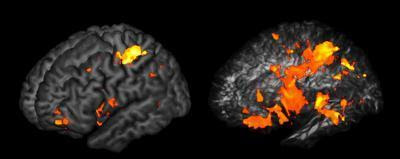Estudo [1] aponta para as conexões entre diferentes partes do cérebro como sendo o fator mais importante para a inteligência geral (fator G). Publicado em 22 de fevereiro de 2010, este estudo parece estar de acordo com a teoria da integração parieto-frontal (P-FIT), que identifica a rede do cérebro relacionada ao fator G como envolvendo principalmente os lobos frontais e parietais.

Fontes:
[1] J. Gläscher, D. Rudrauf, R. Colom, L. K. Paul, D. Tranel, H. Damasio, and R. Adolphs. The distributed neural system for general intelligence revealed by lesion mapping. Proceedings of the National Academy of Sciences, February 22, 2010. http://www.pnas.org/content/early/2010/02/05/0910397107.full.pdf+html
[2] J. Gläscher, D. Tranel, L. Paul, D. Rudrauf, C. Rorden, A. Hornaday, T. Grabowski, H. Damasio, and R. Adolphs. Lesion Mapping of Cognitive Abilities Linked to Intelligence. J. Neuron, January, 2009. http://www.iapsych.com/articles/glascher2006.pdf [Supplemental Data: http://www.iapsych.com/articles/glascher2006b.pdf]
[3] J. Gray, C. Chabris, and T. Braver. Neural mechanisms of general fluid intelligence. Nature Science Publishing. February, 2004. http://www.christofflab.ca/pdfs/2009/01/gray-et-al-2003.pdf
Ver também:
S. Karama, Y. Ad-Dab'bagh, R. Haier, I. Deary, O. Lyttelton, C. Lepage, A. Evans, and the Brain Development Cooperative Group. Erratum to "Positive association between cognitive ability and cortical thickness in a representative US sample of healthy 6 to 18 year-olds". Elsevier, 2008. http://stbb.nichd.nih.gov/pdf/cog_abil_cort_thickness.pdf
J. Haier: http://www.pediatrics.uci.edu/faculty/neurology/haier/haier.html
Nenhum comentário:
Postar um comentário